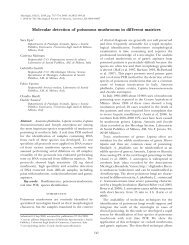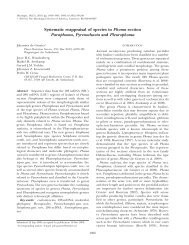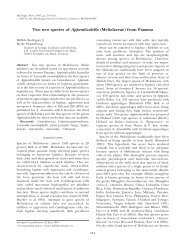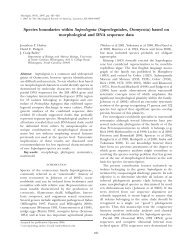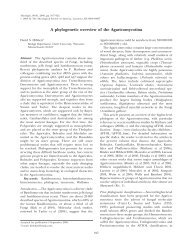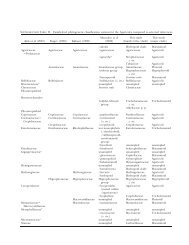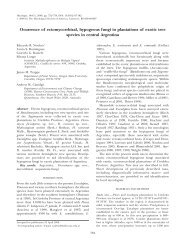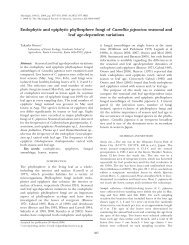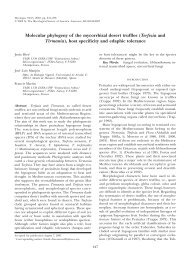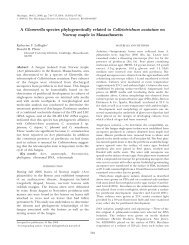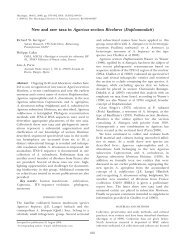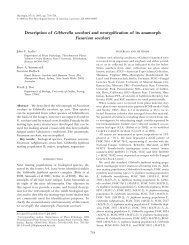Short title: Revision of Morchella taxonomy Taxonomic ... - Mycologia
Short title: Revision of Morchella taxonomy Taxonomic ... - Mycologia
Short title: Revision of Morchella taxonomy Taxonomic ... - Mycologia
You also want an ePaper? Increase the reach of your titles
YUMPU automatically turns print PDFs into web optimized ePapers that Google loves.
Ecology. The ecology <strong>of</strong> <strong>Morchella</strong> prava collections studied was not consistent. Among<br />
the seven collections studied, few if any common ecological denominators were apparent.<br />
Collections were made approximately 43–50°N across North America, in April, May and early<br />
June. (See SUPPLEMENTARY MATERIALS for further ecological data from the collections studied.)<br />
Specimens examined (SUPPLEMENTARY TABLE I) were collected in Michigan, Montana, Ontario,<br />
Saskatchewan and South Dakota.<br />
Comments. <strong>Morchella</strong> prava corresponds to phylogenetic species Mes-7 in O'Donnell et<br />
al. (2011). The species usually can be identified on the basis <strong>of</strong> its esculenta-like stature and its<br />
contorted, asymmetrical and irregular pits and ridges. The pits are highly irregular in outline and<br />
size, and the thick, bluntly rounded ridges are less likely to become eroded and sharpened with<br />
maturity than the ridges in M. esculentoides and M. cryptica. The hymenophore <strong>of</strong> M. prava<br />
<strong>of</strong>ten appears like a contorted or somewhat deformed version <strong>of</strong> the M. esculentoides<br />
hymenophore. Significant differences in microscopic features between M. prava, M.<br />
esculentoides and M. cryptica were not observed, although elements on sterile ridges in the M.<br />
prava specimens studied generally were sparsely scattered or nearly absent, in contrast to the<br />
easily located elements <strong>of</strong> the other two species. <strong>Morchella</strong> prava undoubtedly has been<br />
misidentified as "M. esculenta" and "M. deliciosa" in many North American treatments, and it<br />
probably corresponds to what has been labeled "M. vulgaris" in Québec (see Linc<strong>of</strong>f 1981). It<br />
appeared in Kuo (2005) as the "Classic North American Morel III”.<br />
<strong>Morchella</strong> cryptica M. Kuo & J.D. Moore, sp. nov. FIG. 7<br />
MycoBank MB 563952<br />
Ascomata 60–200 mm alta; capitulum ovoideum cum apice late conico aut convexo; costae pallidae; hymenium<br />
sufflavum aetate; biotopium in silva frondosa in meditulio occidente Americae septentrionalis, alveis ubi Fraxinus<br />
americana L praesens est; sporae 18–23 × 10–13 μm. Holotypus: Biotopium in silva frondosa cum Fraxinus



